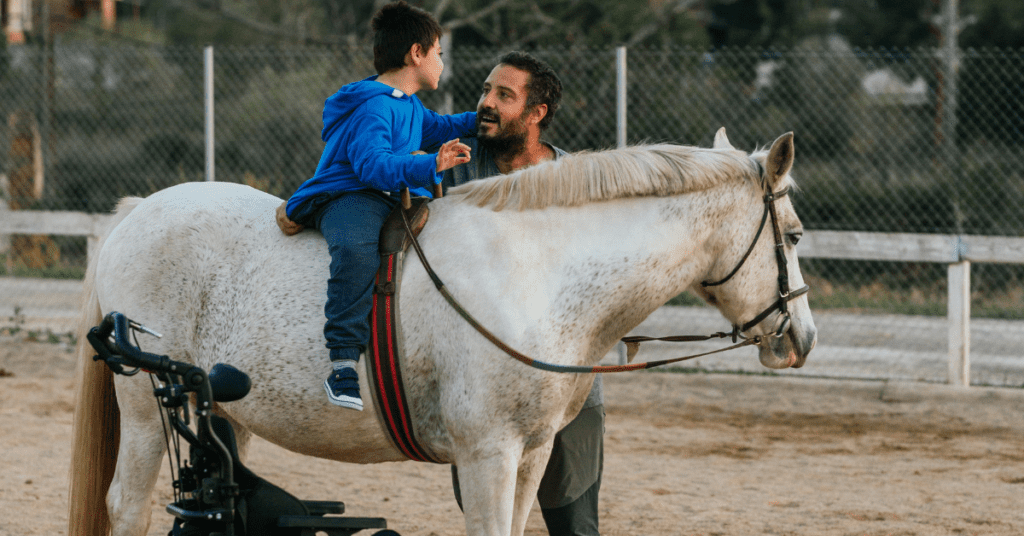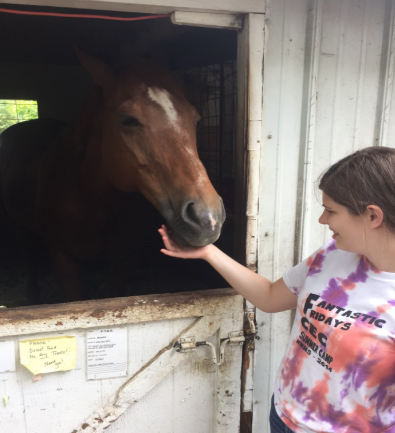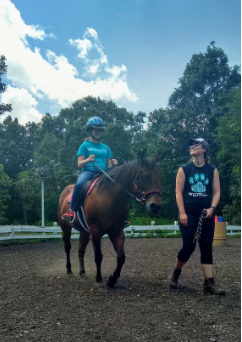
Guest Author: Ellie Martin
Seeking effective methods for healing and growth is significant for rehabilitation. Equine Assisted Therapy, a unique form of therapy that provides the connection between humans and horses to promote emotional well-being, psychological healing, and personal development is growing in popularity with significant positive results. Equine Assisted Therapy involves interactions between individuals and horses under the guidance of trained therapists. It’s not about riding or horsemanship; rather, it’s about engaging with these animals in a therapeutic setting.
Equine Therapy for Emotions
According to Psychology Today, “Equine therapy has been used to treat many mental health conditions including depression, anxiety, ADHD, etc. In addition to targeting symptoms of those disorders, is theorized to help patients build confidence, self-awareness, and empathy.” Equine Therapy offers a non-judgmental space where individuals can explore their emotions, build trust, and develop crucial life skills. While engaging in activities with a horse, they can pick up certain emotions- for example, a person who is angry or anxious may see the horse pull away or respond negatively. This “mirroring” process is thought to help the person identify what they’re feeling and potentially regulate their emotions.
Equine Therapy for Balance
Equine Therapy is also known for its ability to enhance core balance and stability in individuals of all ages. While on the horse, the rhythmic pattern of the horse’s hips is transmitted to the person, simulating the mechanics of walking. This repetitive movement can provide physical input to assist with walking, posture, core stability and range of motion, Stephanie Lever states. As riders adjust to the horse’s movements, they engage multiple muscle groups, including those in the core, legs, and back. Over time, these muscle groups get stronger which will help prevent injury. Riding on a horse engages the core muscles and leads to enhanced core strength and stability, providing lasting effects in daily life.
Ellie's Personal Experience with Equine Therapy
Moreover, the bond formed between horse and rider fosters a sense of trust and confidence, empowering individuals to navigate physical challenges with grace and resilience. Through this symbiotic relationship, Equine Therapy not only strengthens the body but also creates a sense of connection and harmony between mind, body, and spirit.
My experience with Equine Assisted Therapy started when I was in third grade. It helped me strengthen the right muscles in order to walk on my own with the correct posture.



Equine Assisted Therapy is a great option for rehabilitative services. It helps in the realm of mental health and personal development. Its unique approach of human-horse connections offers benefits that some therapies cannot provide. Through gentle interactions with these animals, individuals find strength both physically and mentally that can improve quality of life. From alleviating symptoms of anxiety and depression to enhancing self-awareness and interpersonal skills, Equine Assisted Therapy permits self-discovery and growth.
Disclaimer: Always seek the advice of your physician or other qualified health care provider with any questions you may have regarding a medical condition or treatment and before undertaking a new health care regimen, exercise, treatment, or nutritional supplement. Views expressed in this article are those of the author. NAF does not endorse any products or services.
“Equine-Assisted Therapy.” Psychology Today, Sussex Publishers, www.psychologytoday.com/intl/therapy-types/equine-assisted-therapy. Accessed 10 May 2024.
Ring, Stephanie. “Equine (Horse)-Assisted Therapy Can Help Musculoskeletal or Neurological Conditions.” BenchMark Physical Therapy, 27 July 2023, www.benchmarkpt.com/blog/equine-horse-assisted-therapy-can-help-musculoskeletal-or-neurological-conditions/.
Godden, Robert. “The Lasting Impact of Equine Therapy: A Deeper Look into Its Long-Term Effects.” Medium, Medium, 11 Apr. 2023, medium.com/@robert.godden/the-lasting-impact-of-equine-therapy-a-deeper-look-into-its-long-term-effects-e4fdcac6f30f.
White-Lewis, Sharon. “Equine-Assisted Therapies Using Horses as Healers: A Concept Analysis.” Nursing Open, U.S. National Library of Medicine, 27 Sept. 2019, www.ncbi.nlm.nih.gov/pmc/articles/PMC6917924/.
About the Author
My name is Ellie Martin and I have a rare form of Cerebellar Ataxia. I recently graduated from college where I studied rehabilitation services. I wrote this article as a part of a series of blogs to share information I learned along with some personal experiences on the subject.
Read My Past Articles:




